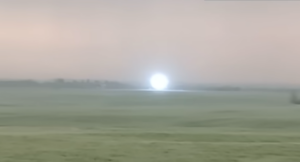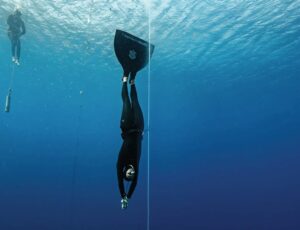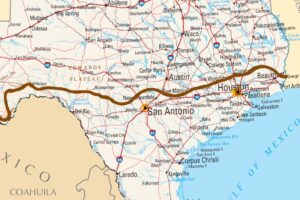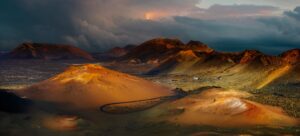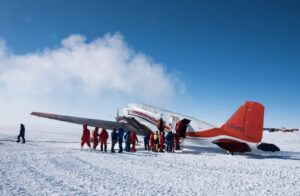A small team led by British adventurer Chaz Powell has completed its 780km east-to-west crossing of Madagascar.
On August 31, Powell, ecologist Emilie Gorse, filmmaker Justin True and photographer Nina Weismeyer set off from the small city of Manakara on the east coast. For the first week, they slogged 170km through the country’s interior, along a jungle rail line and into the central highlands toward the headwaters of the Mangoky, Madagascar’s longest river.

The expedition’s route across Madagascar. Photo: Chaz Powell
The Mangoky marks Powell’s third source-to-sea trek. Earlier this year, he completed a 1,120km expedition along the Gambia River. In 2016-17, he hiked 3,000km through six countries down the Zambezi. But finding a definitive source of the Mangoky River proved difficult despite his experience. Before the main channel, the river is divided into a few separate rivers.
“All of these have many different tributaries and channels coming off them,” Powell explained. Local information was contradictory but seemed to point to the Matsiatra as the dominant tributary. Therefore, the team hiked to the source of the Matsiatra, near the small village of Sahalavo.
The group lost a member when Weismeyer dropped out due to back problems, and the team suffered “mentally and physically, especially with tiredness, hunger and injuries.”
They were forced to divert from the river early and often due to the threat of bandits. Madagascar has a serious problem with malaso (armed bandits) in the interior. Approximately a third of the country is known as the red zone, an area outside of law enforcement control. “People were genuinely scared for our safety, and this left us extremely nervous,” Powell said.

Photo: Chaz Powell
Their first diversion occurred at the village of Isaka. Here, heavy bandit activity made it too dangerous to continue. They hired security and elected to walk south across the mountains to a lower river channel, the vowel-happy Mananantanana. Later, in another small village, they encountered a group of heavily armed men. The men “seemed extremely anxious about our presence and were taking photos of us and looking at all our belongings,” Powell recounts.
Their security guards were deferential to the armed group, and Powell was keen to move on quickly. Although they weren’t followed, they later discovered that these were the infamous malaso. They were told that the only reason they weren’t targeted was that members of that gang had previously been arrested for attacking tourists and were reluctant to take the risk again.
Fortunately, this was their only run-in with bandits. They followed the Mananatanana to the main Mangoky River channel and continued down to the sea at Morombe, on Madagascar’s west coast. They averaged around 27km per day.

Powell, ecologist Emilie Gorse and filmmaker Justin True complete their trek. Photo: Chaz Powell
As with his Zambezi and Gambia treks, Powell hopes to bring attention to habitat and wildlife loss. He described deforestation across Madagascar as horrifying, “areas marked on maps as forests mostly contained small patches of trees. Around 90% of the people across Madagascar rely on charcoal to cook with, so most of the forests have been stripped down completely.”
Unsurprisingly, Madagascar’s unique fauna has suffered too. “Most of the areas we walked through contained nothing. The protected reserves are the only places you can see wildlife thrive, and these areas are getting smaller.”
Related Articles:
Chaz Powell to Trek Across Madagascar
Interview: Chaz Powell on Trekking the Gambia

